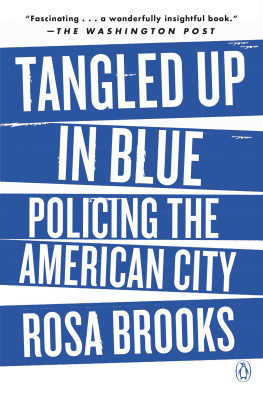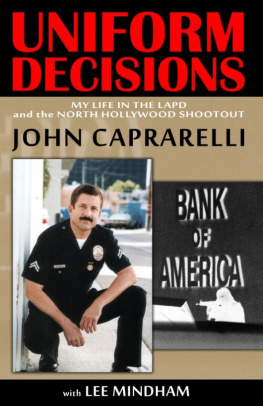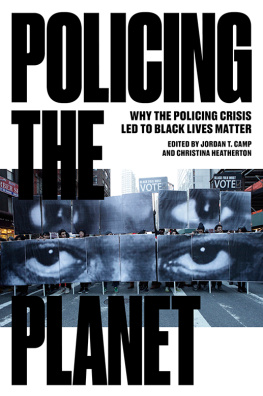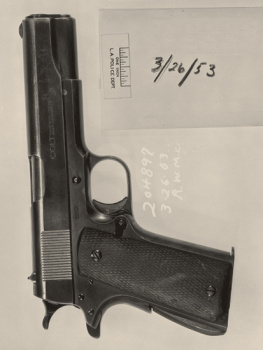Also by Joe Domanick
Cruel Justice:
Three Strikes and the Politics of Crime in Americas Golden State
To Protect and To Serve:
The LAPDs Century of War in the City of Dreams
Faking It in America:
Barry Minkow and the Great ZZZZ Best Scam

Simon & Schuster
1230 Avenue of the Americas
New York, NY 10020
www.SimonandSchuster.com
Copyright 2015 by Joe Domanick
All rights reserved, including the right to reproduce this book or portions thereof in any form whatsoever. For information, address Simon & Schuster Subsidiary Rights Department, 1230 Avenue of the Americas, New York, NY 10020.
First Simon & Schuster hardcover edition August 2015
SIMON & SCHUSTER and colophon are registered trademarks of Simon & Schuster, Inc.
For information about special discounts for bulk purchases, please contact Simon & Schuster Special Sales at 1-866-506-1949 or .
The Simon & Schuster Speakers Bureau can bring authors to your live event. For more information or to book an event, contact the Simon & Schuster Speakers Bureau at 1-866-248-3049 or visit our website at www.simonspeakers.com.
Jacket design by Jae Song
Jacket photo: Tobkatrina/Shutterstock
Library of Congress Cataloging-in-Publication Data
Domanick, Joe.
Blue : the ruin and redemption of the LAPD / Joe Domanick
pagescm
Includes bibliographical references and index.
1.Los Angeles (Calif.). Police Department.2.PoliceCaliforniaLos AngelesHistory.3.Police misconductCaliforniaLos AngelesHistory.4.Police administrationCaliforniaLos AngelesHistory. 5.Criminal justice, Administration ofCaliforniaLos AngelesHistory.
I.Title.
HV8148.L7D6572015
363.209794'94dc23
2015018052
ISBN 978-1-4516-4107-3
ISBN 978-1-4516-4111-0 (ebook)
For the wondrous Andrea Domanick and Ashley Hendra
Out of the blue he mentions Chinatown , the noir classic of prewar Los Angeles political corruption, graft, and police repression.
You know, he says, everyone thinks the last line of Chinatown is Forget it, Jake, its Chinatown. But it isnt.
What is it?
Get off the streets.
William Bratton to a reporter, shortly after being named chief of the LAPD
CONTENTS
KEY PLAYERS
Charlie Beck: An antigang cop and a sergeant during the 92 L.A. riots. Beck would rise to become chief of the LAPD in 2009.
Tom Bradley: Los Angeless first black mayor, Bradley served in that capacity for twenty years, including during the 92 riots.
William Bratton: A renowned reform chief from Boston and New York, Bratton was hired to reform the LAPD in 2004, afterward returning to New York in 2014 to again lead the NYPD.
Andre Christian: A black native son of Watts and a gang-banging member of the notorious Grape Street Crips.
Daryl Gates: Chief of the LAPD for fourteen tumultuous years, Gatess policies precipitated the L.A. riots, during which his leadership proved disastrous.
Alfred Lomas: A Florencia 13 gangster and hired muscle for Florencias drug dealers.
William H. Parker: Chief of the LAPD from 1950 to 1965. Parker started as a reformer and then built the LAPD culture that sparked both the 65 Watts riots and the 92 L.A. riots.
Bernard Parks: Chief of the LAPD from August 1997 to May 2002. Parks presided over the Rampart scandal.
Rafael Ray Perez: A drug-stealing, drug-dealing LAPD CRASH antigang officer, Perezs revelations of a nest of dirty, abusive cops broke open what would become known as the Rampart scandal.
Connie Rice: A civil-rights lawyer, activist, and critic turned supporter of the LAPD.
Willie Williams: A former police commissioner of Philadelphia and the first African-American chief of the LAPD, Williams was hired after the 92 riots to reform the department.
AUTHORS NOTE
I first became interested in the LAPD when I moved from Manhattan to Los Angeles in the mid-1970s. I was then a public school teacher working in a junior high deep in the South Bronx, where the frenzied halls reflected both the chaos of the time and the wild discord of the streets outside. At dusk, on the subway back to Manhattan, the vibe turned edgy as my subway car ground through some of the citys most violent neighborhoods without a cop ever in sight.
Back then, NYPD officers and their counterparts in the Transit Police seemed never to be around when you wished they were, and when they were, you couldnt help but notice how the weary slump of their shoulders and their disheveled appearance announced their disillusionment with their jobs.
When I arrived in Los Angeles I was astounded by how different LAPD officers were. First, it was clear that they hadnt given up. The departments jackbooted, superbly tailored motorcycle officers had the look and bearing of the prototype models they actually were for the film RoboCop , and acted the part.
Like the rest of the LAPD, theyd been trained to aggressively seek out crime and to confront and command a suspect in an aloof, intimidating, and often arrogant manner, even if that suspect had committed only a minor infraction, or done nothing wrong at all.
That attitude alone seemed to start more trouble than it stopped. And if you were black, the experience was astonishingly worse, and exponentially more frequent.
Every politician in town, moreover, seemed to kowtow to the LAPD, afraid of getting into a public spat with a succession of chiefs who, paradoxically, were not afraid of offending anyone. I wanted to understand the source of the departments extraordinary power, and wrote my first LAPD book, a character-based, historic narrative of the department called To Protect and To Serve , as a way to find that understanding.
I discovered that for the first half of the twentieth century a small oligarchy of right-wing business interests, led by the Los Angeles Times , had used the LAPD not only to rigidly control the streets but also to serve as a private goon squad, unapologetically maintaining the status quo by breaking the heads of union organizers and left-wing dissidents.
That changed in 1950, when Chief William H. Parkerthe godfather of the modern LAPDwrestled supremacy over the department away from the oligarchs and gave it to himself and his successors. In the process he created a faceless paramilitary police force that would dominate the streets of Los Angeles virtually independent of elected civilian control for the next forty years.
During those years, L.A.s population dramatically transformed from a white, Protestant, conservative majority to a liberal, increasingly black, Latino, Asian, and Jewish population demanding that the LAPDs repressive policing change along with the city and the timesa demand the department both scorned and fought every step of the way.
In 1991, the tension finally snapped when four white LAPD officers were caught on videotape beating a black motorist named Rodney King. The grainy footage then found its way to CNN and became a cause clbre around the world. A year later the four officers were acquitted, sparking the bloody insurrection known as the L.A. Riots. In response, a new chief from outside the department was hired, and City Charter reforms, including limiting the power of LAPD chiefs, were overwhelmingly approved by voters. Nevertheless, for the next decade, little changed on the street.
Wanting to understand why reform was proving so hard to implement, and then how it finally got started, I decided to revisit the LAPDs history starting with the 92 riots and, ultimately, to write this book.
Next page






